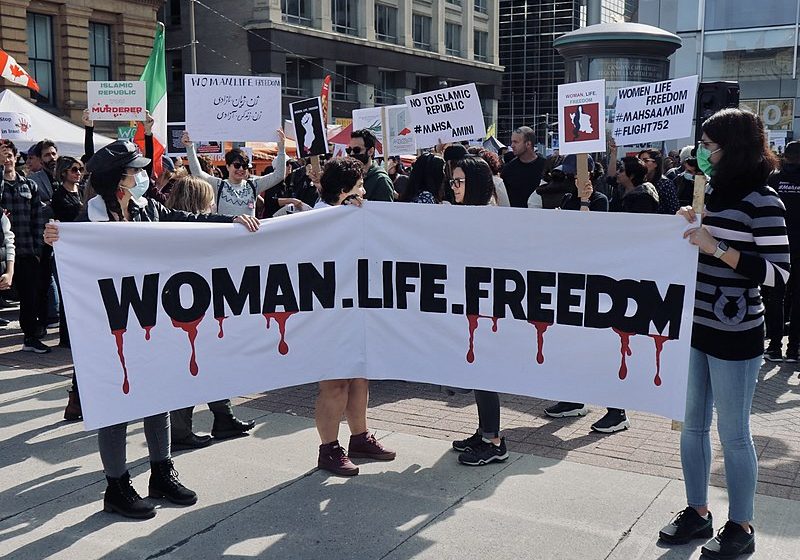Australia/Israel Review
Totalitarianism Rising
Oct 2, 2006 | External author
By Mehdi Khalaji
As part of the current close consultation over how to respond to the Iranian nuclear challenge, a key consideration is, who are the key decision-makers in Iran? In particular, what are the relative roles of Supreme Leader Ayatollah Ali Khamenei and President Mahmoud Ahmadinejad? The record from Ahmadinejad’s first year in office suggests that at least on domestic policy, his actions have systematically reinforced Khamenei’s authority.
Although it is true that power in Iran is not entirely in the hands of one person, Iran’s Supreme Leader has consolidated much power and is the final decision maker within the Islamic Republic. According to the constitution, the Supreme Leader directly appoints the head of the judiciary; military officers; the Expediency Council; a majority of the Guardian Council; and the heads of dozens of political, economic, and cultural institutions. Of Iran’s important political positions, only the presidency and parliament (Majlis) members are outside the Supreme Leader’s power of appointment.
By means of Ahmadinejad’s 2005 election as well as the conservative victory in 2004 Parliamentary elections, Khamenei has marginalised opposition in the elected political bodies. As it stands now, the supreme leader is well positioned to intervene to resolve any differences among members of the Majlis and between the Majlis and Ahmadinejad’s cabinet.
Economic Power
The Iranian economy has suffered from restrictive state economic policies for many decades. This problem has become more pronounced under the Islamic Republic, many of whose leaders admire command economies and closed economic systems in which everything is produced at home.
One way for the Supreme Leader to expand his political authority is to extend his economic reach. In the last year, Khamenei expanded his economic power through Ahmadinejad’s economic policy. For example, in the current state budget, governmental religious institutes have benefited from an unprecedented increase in their annual funding. The affected institutions include the Centre for Management of the Seminary, the Office of Islamic Propaganda, the Islamic Propaganda Organisation, the Culture and Islamic Relations Organisation, the Imam Khomeini Educational, the Research Institute, and the Office of Friday Prayer Imams.
Many economic institutions function under the authority of the Supreme Leader but officially are considered private organisations. This is particularly true of the foundations (bonyads), such as the Martyr Foundation, the Oppressed Foundation, the Holy Shrine of Imam Reza, the Khatamol Anbia Company, and the Fifteenth of Khordad Foundation, which legally are tax-exempt nonprofit organisations that are free of Majlis or presidential control.
In addition, Khamenei has tight control over the Islamic Revolutionary Guard Corps, which has come to have a tremendous economic role. The Revolutionary Guards have exploited their favoured political position to win business they otherwise could not have. This problem has worsened under Ahmadinejad. On June 7, the Ministry of Oil awarded a $1.3 billion no-bid contract to the Revolutionary Guards to build a pipeline to transport gas across Iran. This contract infuriated private construction companies. It will provide the Revolutionary Guards with an opening to enter the oil and gas sector. This is just one of many examples of how organisations controlled by the supreme leader are cutting the private sector out of business opportunities.
In July 2006, Khamenei ordered the three branches of government to cede 80 percent of the shares of major state-owned enterprises to the people. That may seem like a positive step toward a free-market economy. However, economic experts believe that Khamenei’s privatisation plan is no such thing. In fact, privatisation may follow the pattern of the privatisation at the end of the Iran-Iraq War, when shares in state-owned firms were sold via the Teheran Stock Exchange to the state-owned banks. The result of that the privatisation was simply to put the nominally private firms beyond parliamentary or presidential supervision. It is entirely possible that the privatisation will end up enlarging the Supreme Leader’s economic empire.
Cultural Control
It would seem that the Ahmadinejad administration wants to transform the Islamic Republic into a totalitarian regime that leaves no part of the private sector or public sphere beyond its control. In addition to the economic measures cited here, Ahmadinejad has stepped up government controls in the cultural sphere, including over literature and art. For instance, in August, the Ministry of Culture and Islamic Guidance announced that no gallery is allowed to display paintings without first applying for permission for each individual painting. On September 5, Ahmadinejad urged students to push for a purge of liberal and secular university teachers. He called on students to pressure his administration to keep driving out moderate instructors, a process he announced had begun earlier this year. This would pave the way for the aggressive suppression of freedom of expression and democratic ideals in all educational institutions.
Ahmadinejad’s victory in last year’s presidential election has had the effect of increasing Khamenei’s power. By contrast, had the presidential election been won by better known candidates such as Ali Akbar Hashemi Rafsanjani, the influential head of the Expediency Council, or Mehdi Karrubi, the former Majlis Speaker, Khamenei would have had to contend with a strong alternative power centre. This suggests that Khamenei had every reason to intervene in the election process to ensure the victory of a politically unknown figure such as Ahmadinejad.
Mehdi Khalaji is a visiting fellow at The Washington Institute for Near East Policy. © Washington Institute, reprinted by permission, all rights reserved.
Tags: Iran






